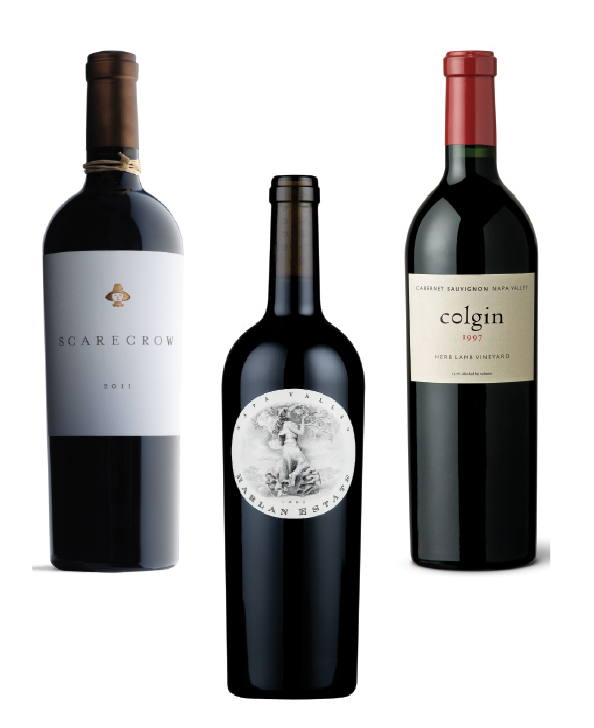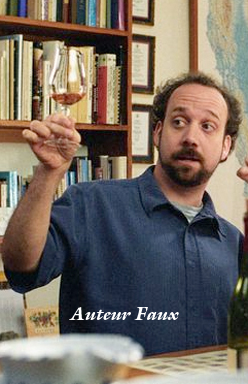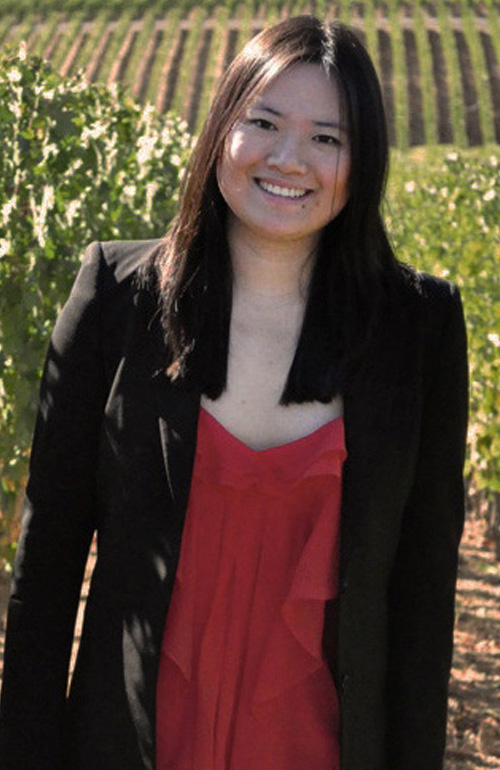Steely Dan labeled it best as Pretzel Logic. Longtime readers of this blog will remember the Ginkgo Girl from my earliest posts and are likely to realize I have not filled the void in my life since we split up several years ago. To a large extent, Your West Coast Oenophile has had to make do on a subsistence level while raising funds for Sostevinobile—not exactly something that enhances one’s marketability on the romantic front—so with my recent rise from the threadbare level of impecuniosity, I have concomitantly become more self-assured in my social forays. But alas, the hopes I had affixed to an exceedingly charming woman I met at a SoCap gathering were promptly dashed with “I am happily married” in our ensuing conversation.
Like many others, I find myself taking solace not just in wine but in music as well, at such moments of deep disappointment, and so I tracked down the ever-so-appropriate video of Midnight Confessions by The Grass Roots. YouTube usually generates a list of interrelated videos in its right side column whenever you visit their site. I suppose there is a thematic link to Linda Ronstadt’s Long, Long Time—after all, who has better vocalized unrequited love?—even if, musically, these two acts could not be more incongruous. In turn, I subsequently indulged in a reprise of her great hits from the 1970s to distract myself from the hazardous air quality that had sequestered me in my San Francisco flat for the better part of a week.
Christopher Loudon of Jazz Times wrote in 2004 that Ronstadt is “blessed with arguably the most sterling set of pipes of her generation.“ I certainly won’t contend with the overall sentiment of this encomium, but just as wine connoisseurs will favor the 2012 Ghost Horse Spectre over Screaming Eagle, true music aficionados know that Tracy Nelson has no peer. The former lead singer of Mother Earth has only achieved minor commercial success over the years, save for her now-obscure duet with Willie Nelson and theme for this post: After the Fire is Gone.
The recent conflagrations in the wine country have exacted a toll on the California wine industry that will take months to comprehend fully. Somewhere between the sensationalist headlines of the national media and the laudable optimism of the growers and vintners there lies a sobering reality no one has yet to comprehend fully. And among the myriad efforts to aid the stricken communities, it has been particularly laudable to see and participate in the events sponsored by CA Wine Strong, a collective effort among numerous wine trade associations across the state. In my usual overambitious manner, Sostevinobile is exploring sponsoring its own wine benefit in the ensuing months, but I will decline to expound further until it is a certainty.
In the meantime, I hesitate to note that the aftermath of this cataclysm does leave open a long overdue window for the many diverse viticultural districts across the state and throughout the West Coast to attract attention to their wondrous wines. This should not be seen as opportunistic—wide appreciation for the panoply of wines produced here can only help invigorate the world’s perception of our entire region once Napa and Sonoma have fully rebounded.
Many other industry veterans have noted that emergent Cabernet strongholds like Paso Robles, the Columbia Valley, and Washington’s Red Valley are now likely to come into prominence. Wineries nearby in AVAs like Monterey, the Livermore Valley, and the Santa Cruz Mountains have long had strong local followings, and will certainly now look to expand the scope of their reputation. But it is my hope that the many unheralded regions will now also be given their due.
Even I have had my share of serendipitous moments of late, discovering a wealth of wineries in AVAs like Inwood Valley and Clarksburg, where an understated Scribner Bend amazed with its 2013 Black Hat Tempranillo. And spurred by Mike McCay’s tireless efforts to tireless efforts to define and refine Zinfandel vinification as the signature expression of the AVA, rising stars like Michael Klouda, whose spectacular 2015 Carignane Lodi Appellation has rightfully been called “a phenomenal expression of this underappreciated varietal,” are reinventing Lodi as a must-see destination.
After combing through my copious tasting notes for 2017, I still feel the most impressive wine I have sampled thus far has been the 2015 R Blockhouse Vineyard Dolcetto from Jeff Runquist. This superb, exquisitely balanced wine embodied all of the glory that a superior Dolcetto can reach. Admittedly, these grapes were sourced from Yountville, but the overall craft of this winemaker, who blends grapes from Amador County, El Dorado County, Paso Robles, Clarksburg, Lodi, Stanislaus County, San Joaquin County, and River Junction as well, reaffirms why this winery is one of the true beacons of the Amador AVA . Acrosss Shenandoah Road, the inveterate Vino Noceto produces some of California’s purest expressions of Sangiovese, in particular the 2014 Dos Oakies Sangiovese, which I sampled during a delightful 3-hour tour and tasting with owners Jim and Suzy Gullett. Their plantings and vinification of Sangiovese Grosso clones sourced from Montalcino are a testament not only to the Shenandoah Valley sub-AVA but to the incredible bounty of varietals produced throughout California.
As noted in previous posts, Vino Noceto has a kindred spirit in the Los Olivos AVA, Jamie and Julie Kellner’s esteemed Cent’Anni, whose authentic recreation of Chianti employs their meticulous plantings of Montepulciano, Sangiovese Clone 3, Sangiovese Clone 6, Sangiovese Clone 23, Sangiovese Rodino Clone, Colorino, and Caniaolo. Yet while Santa Barbara County may contain Southern California’s most noted winery cluster, numerous other as-yet unheralded enclaves are starting to clamor for attention.
Among these are the Ramona Valley in San Diego, both Malibu-Newton Canyon and Malibu Coast (including parts of Ventura County) in Los Angeles County, Cucamonga Valley, which straddles both Riverside and San Bernadino counties, and Sierra Pelona Valley near Santa Clarita. Several of these areas focus heavily on the Italian varietals Sostevinobile so favors, as does the Temecula Valley, the most prominent wine region of Riverside County.
I have only visited this AVA once before, but have known its warm climate to be well-suited for grapes like Nero d’Avola and others thermophilic varietals that predominate the Italian south. But Temecula was ravaged by Pierce’s Disease at the beginning of this millennium, which obliterated over 90% of its vines. Despite replanting, the region has been handicapped by this event, and, in truth, I, too, held an enormous skepticism about its quality and viability. That is, until I was introduced to one of its oldest and most resilient wineries, Baily Winery. Initially, as a courtesy, I had invited owner Phil Baily to participate in the Dartmouth & Its Winemakers tasting I produced this past spring, expecting he might pour a white wine and his Sangiovese, as representative of the region. Rather, Phil not only flew up to Menlo Park the night before the event but graced us with a 3-year vertical of his signature estate blend—I have savored the 2013 Meritage many times since—Cabernet Sauvignon invused with Cabernet Franc, Merlot, and Malbec, all grown at his Berenda Vineyard. All three vintages could easily have fetched twice the price tag of $65, had they been cultivated in Napa or Alexander Valley. But perhaps the ultimate barometer of Temecula’s status and quality is that numerous of its wineries are now the target of Chinese investment!
Like most, I grieve for the losses friends and colleagues throughout the North Coast have endured this fall. And I have little doubt most, if not all, will prevail despite this incalculable devastation and return in time to their former prominence, steeled with resolve and renewed fervor. I, too, will continue efforts to aid them in ways at which I am most adept, while employing Sostevinobile’s various resources to promote other West Coast wine regions during this period of rebound and transition. After all, the perceoption of a robust and pervasive wine industry throughout our Pacific region can only be beneficial to all.




